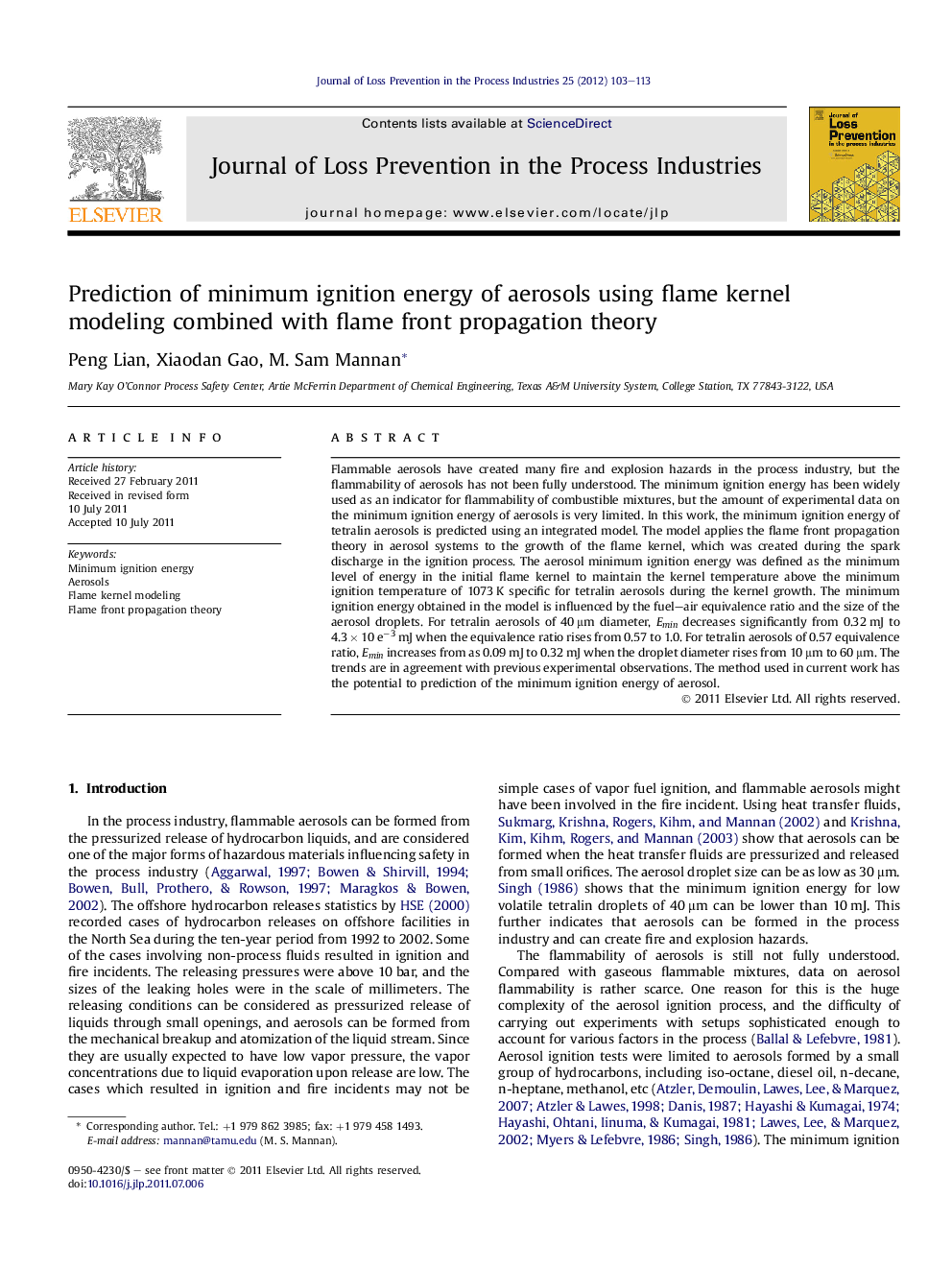| Article ID | Journal | Published Year | Pages | File Type |
|---|---|---|---|---|
| 586563 | Journal of Loss Prevention in the Process Industries | 2012 | 11 Pages |
Flammable aerosols have created many fire and explosion hazards in the process industry, but the flammability of aerosols has not been fully understood. The minimum ignition energy has been widely used as an indicator for flammability of combustible mixtures, but the amount of experimental data on the minimum ignition energy of aerosols is very limited. In this work, the minimum ignition energy of tetralin aerosols is predicted using an integrated model. The model applies the flame front propagation theory in aerosol systems to the growth of the flame kernel, which was created during the spark discharge in the ignition process. The aerosol minimum ignition energy was defined as the minimum level of energy in the initial flame kernel to maintain the kernel temperature above the minimum ignition temperature of 1073 K specific for tetralin aerosols during the kernel growth. The minimum ignition energy obtained in the model is influenced by the fuel–air equivalence ratio and the size of the aerosol droplets. For tetralin aerosols of 40 μm diameter, Emin decreases significantly from 0.32 mJ to 4.3 × 10 e−3 mJ when the equivalence ratio rises from 0.57 to 1.0. For tetralin aerosols of 0.57 equivalence ratio, Emin increases from as 0.09 mJ to 0.32 mJ when the droplet diameter rises from 10 μm to 60 μm. The trends are in agreement with previous experimental observations. The method used in current work has the potential to prediction of the minimum ignition energy of aerosol.
► Modeling of the flame kernel growth during the spark ignition of aerosols. ► Application of the flame front propagation theory to the process of flame kernel. ► Flame kernel growth in the second stage of the spark ignition process. ► Available energy stored in the flame kernel as the ignition energy.
